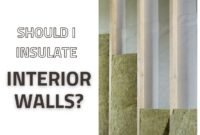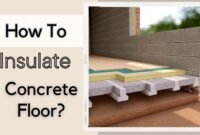Do you even understand what is the difference between faced and unfaced insulation? Proper and correct insulation for the home is super important, especially if you want to save up (utility) costs and bills.
Understanding the difference between faced and unfaced insulation is crucial in selecting the appropriate facing material for your home insulation needs.
When your house isn’t properly insulated, your energy bills may hike up to thousands of dollars being thrown out the window. When the air leaves your house too fast, your heater or AC may have to work overtime to compensate.
Insulation can go bad and deteriorate over time. Today’s homeowners have the option to use faced or unfaced insulation. The first one is prevalent today, but will it be the right one for your house? In some cases, unfaced insulation is the best option. So, let’s dig deeper into these two facts to find each strength and possible downsides.

Faced vs. Unfaced
Faced insulation means that it involves kraft paper in the installation. Also known as a paper vapor retarder or barrier, this kraft paper would be attached to one side (of the insulation) to block moisture.
In humid environments, faced insulation with its vapor barrier, such as kraft paper, aluminum foil, or vinyl, is essential to prevent moisture accumulation that could lead to mold and mildew issues.
The faced insulation will be perfect if you live in humid areas like coastal cities.
In some areas, the contractor may not use kraft paper, but they use light aluminum foil or vinyl. They act as the vapor barrier. However, not all areas approve these materials, so you must check your building codes and local regulations before choosing the right insulation.
Read also: Building Insulation Guide: Cheapest Way to Insulate a Metal Building
As you can guess, the unfaced insulation doesn’t include any vapor barrier or similar things. When adding to existing insulation, unfaced insulation is often preferred as it avoids the risk of trapping moisture between layers, leading to mold and mildew problems.
However, this insulation type is considered safer because it doesn’t involve combustible materials. That’s why unfaced insulation is often advertised as noncombustible insulation that can reduce the possibility of fire. With this insulation, the flame spreading can be slowed or even entirely stopped.
Faced Insulation Installation
DIYers like this kind of insulation because it’s easier to install. You can easily staple, move, or roll the insulation without worrying that it may fall apart, thanks to the paper vapor barrier as the one holding everything together.
Such a benefit isn’t owned by the unfaced insulation, which is more vulnerable to tearing. Moreover, this insulation won’t work with staples, so the installer has to figure out something. Some installers may add a plastic vapor barrier over this insulation to secure the installation and block moisture.
You should also consider the possible issues with this insulation type. The vapor barrier being trapped between two insulation layers can lead to the build-up of moisture.
It’s important to correctly install faced insulation to prevent moisture build-up, which can lead to mold and mildew, damaging your home’s insulation and structure.
When it happens, there is a big chance that you will deal with mildew and mold growth inside your home’s walls. That’s why the vapor barrier must be on the outside area of the insulation stack, NOT inside.
The Cost
Although people like the faced insulation more, it’s slightly costlier. Generally, the faced insulation may cost you from $0.50 to $2 for a square foot (ceiling or wall). On the other hand, the unfaced insulation will cost around $0.50 to $1.75 for a square foot.
This cost difference shows the general difference between $0.10 and $0.25 for a square foot. The vapor barrier likely causes a slight difference.
Final Words
You should talk to your contractor about the best option to insulate your house. When discussing options with your contractor, consider the state of your existing insulation and the specific needs of your home to ensure effective and safe insulation against moisture and mold risks.
Talk to them about both types’ risks and benefits, and ask for recommendations about the most proper installation.
Go with licensed and reputable contractors with insurance coverage in case anything bad happens to the project. Now that you know the answer to the what is the difference between faced and unfaced insulation, you can carry on and make the best decision.


